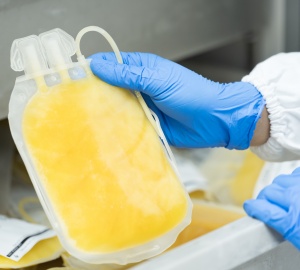
Maintaining the viability and functionality of peripheral blood mononuclear cells (PBMCs) is essential for generating dependable research data. However, without proper isolation and storage methods, PBMC quality can deteriorate rapidly, leading to inconsistent or unreliable results. Two factors are critical for long‑term PBMC preservation:
- The cryopreservation solution used
- The freezing protocol, particularly the use of controlled‑rate freezing
By optimising both, researchers can significantly improve reproducibility in immunology, haematology, and translational studies.
What are cryopreservation solutions?
Cryopreservation solutions are specially formulated media that protect cells from damage during freezing. They typically include cryoprotectants such as dimethyl sulfoxide (DMSO), which prevent the formation of ice crystals inside cells. Ice crystals can rupture membranes and damage organelles, ultimately leading to cell death or functional loss.
These solutions help stabilise PBMCs during storage, preserving their phenotypic profile for a wide range of applications, from PBMC flow cytometry to functional immune assays.
Benefits of using optimised cryopreservation media:
- Inhibits ice crystal formation inside cells
- Protects cell membrane integrity during freezing
- Preserves the diversity of PBMC subtypes needed for biomarker discovery and immunological analysis
Why controlled‑rate freezing is essential
The speed of freezing plays a major role in determining PBMC recovery after thawing. Freezing too quickly can cause osmotic shock and intracellular ice build‑up, damaging cells. Conversely, a gradual, controlled decrease in temperature allows water to leave the cells before freezing occurs internally, reducing structural stress.
This is particularly important when working with PBMCs isolated from leukopaks or via Ficoll separation, where high‑quality preservation is critical for downstream applications.
Advantages of controlled‑rate freezing:
- Minimises cellular stress during temperature reduction
- Achieves higher post‑thaw cell viability
- Maintains PBMC functional capacity for experimental use
Maximising post-thaw viability
Even the best cryopreservation methods can fail if the thawing process is not optimised. A robust freezing-thawing protocol is essential for recovering the highest possible number of healthy cells. This is especially crucial for studies involving:
- Rare immune cell populations
- Large‑scale functional assays requiring high cell counts
- Clinical and longitudinal studies where consistency between fresh and frozen samples is vital
Why PBMC storage methods impact research quality
Using premium cryopreservation solutions alongside controlled‑rate freezing offers several advantages for researchers:
- Long‑term PBMC storage without compromising quality
- Reliable comparability between fresh and frozen PBMC samples
- Improved reproducibility across multiple research sites and time points
These methods help protect the integrity of valuable human biospecimens, supporting robust and trustworthy findings in haematology and immunology research.
High-quality PBMCs for research
Research Donors can provide both fresh and frozen PBMCs that are processed and preserved to exacting standards. For example, frozen PBMCs prepared within hours of collection using high‑grade cryopreservation media and controlled‑rate freezing equipment maintain exceptional post‑thaw viability.
Many high‑quality PBMC products originate from HLA‑typed leukapheresis donations, enabling researchers to select samples that match their experimental requirements. Additional customisation such as donor selection and isolation protocols can further enhance experimental reliability. Contact our Research Donors specialists today to kickstart your PBMC project.
This blog was adapted from Research Donors original content.
